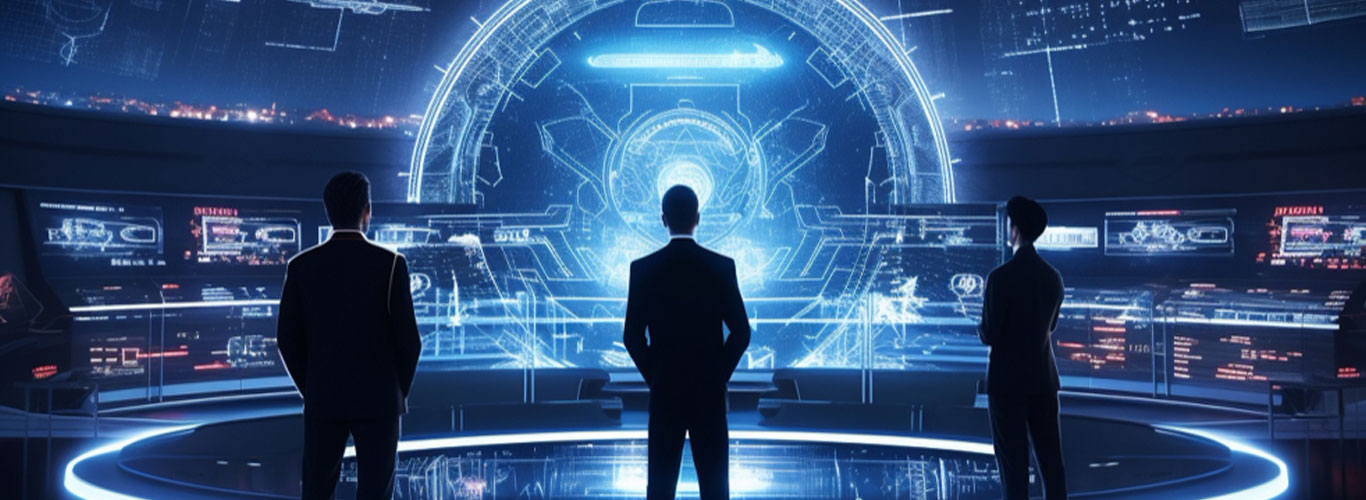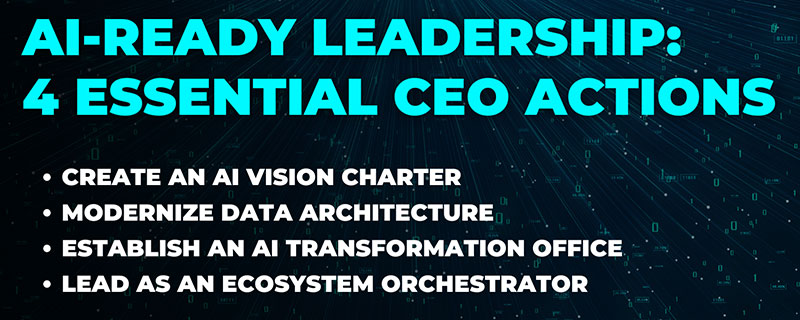The AI-Led Enterprise: How CEOs Can Lead Through the Next Wave of Disruption
“The last wave of disruption was digital. The next is deeply intelligent.”
If you’re reading this, you’ve already weathered more than your fair share of storms. Cloud computing, digital transformation, and remote work were once seismic shifts. Each demanded that we, as CEOs, reimagine our organizations from the ground up.
But the next wave is different. Artificial intelligence isn’t just another upgrade or a new tool in the digital toolbox. It’s a fundamental rewiring of how enterprises think.
Yet, despite billions invested, a recent McKinsey survey reveals a sobering truth: only a small fraction of organizations have managed to scale AI beyond pilot projects. The rest are stuck in experimentation, unable to cross the chasm from promise to performance. Why?
As CEOs, we’ve proven we can adapt to digital. But AI demands more. It’s not about automating processes; it’s about enabling autonomous, context-aware decision-making at scale. The organizations that thrive in this new era will be those whose leaders break through the pilot barrier and architect truly AI-led enterprises.
From Digital-First to AI-Led: What’s Changing
Digital-first was a revolution. It gave us unprecedented access, speed, and customer experience. We digitized workflows, connected systems, and empowered teams with data. But digital-first was, at its core, about making existing processes faster and more accessible.
But AI-led is a leap beyond. It’s about intelligence, adaptability, and autonomy. In a digital-first enterprise, we analyze customer churn after the fact, using dashboards and reports to inform next steps. In an AI-led enterprise, we predict churn before it happens, adapt offers in real time, and, crucially, act autonomously to retain customers, all without waiting for human intervention.
Consider Amazon, which has moved from digital-first to AI-led by deploying “anticipatory shipping.” Their AI predicts what products customers will order and pre-positions them in warehouses, reducing delivery times and costs.
This is the shift from process automation to autonomous decision-making. It’s the difference between a car with cruise control and a self-driving vehicle. The former helps you go faster; the latter changes the very nature of the journey.
The CEO’s Evolving Role in an AI-Led Future
This new era demands a new kind of leadership. The AI-led enterprise isn’t built by delegating AI to a “center of excellence” or a handful of data scientists. It requires CEOs to lead from the front, to become champions of agentic AI business model reinvention.
What does this mean in practice?
- Lead AI from the front: AI strategy cannot be an afterthought. It must be woven into the fabric of your business model, your culture, and your value proposition.
- Build cultures where AI augments human potential: The best AI systems don’t replace people; they amplify them. Our job is to create environments where humans and intelligent agents co-create value.
- Shift from reactive to proactive decision-making: In an AI-led enterprise, we don’t wait for problems to surface. We anticipate, adapt, and act, often before competitors even see the opportunity.
The CEO’s mandate is clear: don’t just adopt AI. Architect your enterprise around it.
Five Levers of the AI-Led Enterprise
So, how do we get there? Through five critical levers:
1. Agentic AI Systems
Nuvento’s Agentic AI systems, like ExtractIQ or OpsIQ, make context-aware decisions. They don’t just execute tasks; they understand intent, adapt to changing conditions, and learn from outcomes. Imagine intelligent agents that manage supply chains, optimize pricing, or personalize customer journeys, not by following scripts, but by reasoning and acting autonomously.
2. Enterprise Intelligence Layer
Static dashboards are relics of the past. Tools like Neurodesk are ushering in a new era of enterprise intelligence, where leaders move from rear-view reporting to real-time, actionable insights. This intelligence layer sits atop your data, surfacing opportunities and risks as they emerge, and empowering leaders to act with unprecedented speed and precision.
3. AI-Native Talent Strategy
The nature of work is changing. Roles are shifting from task-based to decision-based. The most valuable employees will be those who can co-work with AI, interpreting its recommendations, providing context, and exercising judgment.
As CEOs, we must invest in reskilling our teams, not just to use AI, but to thrive alongside it.
4. Digital Brains, Not Just Digital Tools
It’s time to move beyond digital tools and build a true “Digital Brain” for the enterprise, a connected network of people, systems, and intelligent agents that learns, reasons, and acts as a unified whole. This isn’t about automating code; it’s about creating AI that understands your business, your customers, and your strategy.
5. Trust, Transparency & Governance
With great power comes great responsibility. As we deploy AI deeper into our organizations, we must ensure it is explainable, auditable, and aligned with our values. CEOs must champion responsible AI, building systems that are transparent, fair, and trustworthy. This isn’t just a compliance issue; it’s a foundation for long-term success.
Leading Forward: What CEOs Should Do Now
The path to an AI-led enterprise is both urgent and achievable. Here’s where to start:
- Build an “AI Vision Charter”: Articulate a clear, enterprise-wide vision for how AI will transform your business. This isn’t a technology roadmap; it’s a strategic manifesto that aligns your leadership team and inspires your workforce.
- Invest in an AI-ready data architecture: AI is only as good as the data it learns from. Modernize your data infrastructure to ensure it is accessible, high-quality, and secure.
- Appoint an AI Transformation Office: This isn’t a side project. Establish a dedicated team to drive AI adoption, measure impact, and scale successes across the enterprise.
- Shift from control-based leadership to ecosystem orchestration: The most successful AI-led enterprises will be those that orchestrate ecosystems of partners, platforms, and talent, rather than trying to control every node. Embrace openness, collaboration, and co-creation.
Your Legacy as a CEO Will Be Defined by How You Led the AI Shift
The companies of tomorrow are being architected today. And so are the leaders.
This isn’t about chasing the latest hype or deploying AI for AI’s sake. It’s about building resilient, intelligent enterprises that can thrive in a world where disruption is the new normal. As CEOs, your legacy will be defined not by how you managed the last wave, but by how you led through the next.
The future belongs to those who lead with vision, courage, and a deep commitment to harnessing AI for good. The time to act is now.






